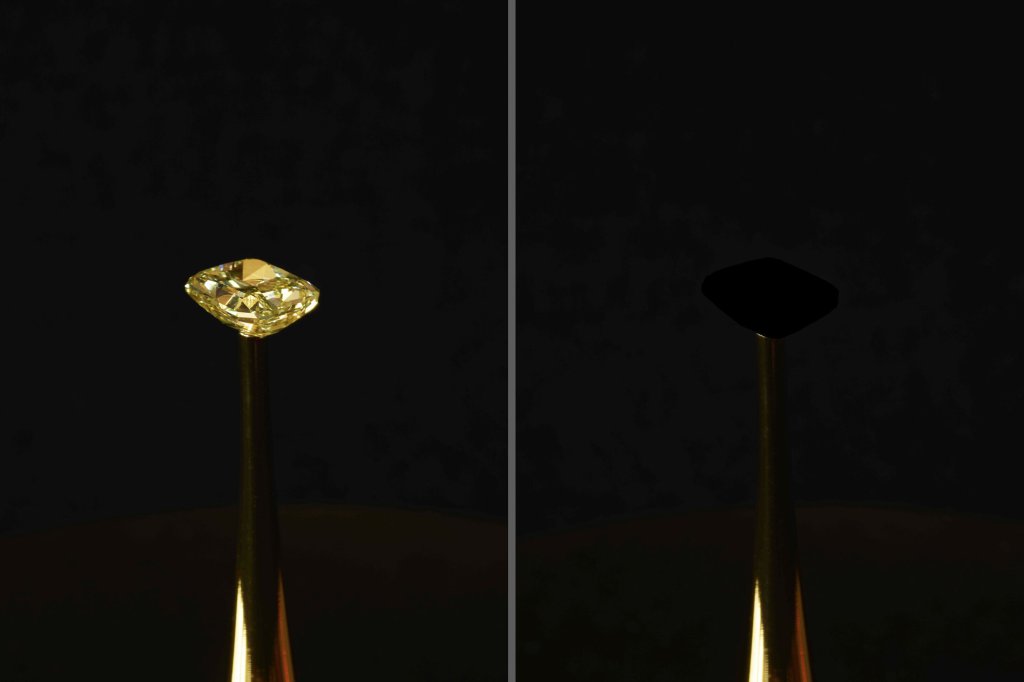The world went bonkers back in 2014 when a UK nanotech company announced they’d created the darkest shade of black in the world. Surrey NanoSystems had manufactured a material using carbon nanotubes that had the highest light absorption rate ever recorded. They called it Vantablack, and it absorbed an unprecedented 99.96% of the light that hit it. Vantablack made headlines again in 2016 when celebrated British sculptor Anish Kapoor seized exclusive rights to the material. Even though it hadn’t been tested fully and was potentially dangerous to use, Kapoor’s claim over Vantablack infuriated a number of his contemporaries. Since then, the research scientists at Surrey NanoSystems have continued to tinker with the material, and the result is an even darker Vantablack—Vantablack 2.0, if you will. We got our first glimpse of it in a video released in March of 2016 that showed the red light of a laser pointer vanish when it was run through a surface coated in the new material.
In the video’s description, researchers at Surrey write, “It’s resulted in a coating so black that our spectrometers can’t measure it!” In fact, if you’re standing directly in front of a surface that’s been coated in Vantablack, the covered object, no matter its shape or dimension, will appear flat and empty. This phenomenon is perhaps best demonstrated in another video showing off the new Vantablack formula, wherein Surrey researchers placed two identical bronze sculptures side by side, one having been coated in the new product. The sculpture not covered in black reflects the room’s overhead lights and features all the indentifiers of a man’s face: defined cheekbones, indents for the eyes, and a protruding nose. The sculpture next to it, despite having the exact same form, appears to be completely flattened. It’s not until the camera moves to the side of the sculpture that we see its three-dimensionality.
Videos by VICE
In the video’s description the researchers explain that they covered the sculpture on the right with this unreleased non-nanotube coating that has a total hemispherical reflectance of 0.3% at 600 nm wavelength. “Unlike Vantablack, which is a free space material that doesn’t tolerate handling, this is a solid coating that is far more tolerant.”
Check out our previous coverage of Vantablack here.
Related:
Anish Kapoor is Banned From Buying the World’s Pinkest Paint
Anish Kapoor Is Now Banned From Buying the World’s Most Glittery Glitter




